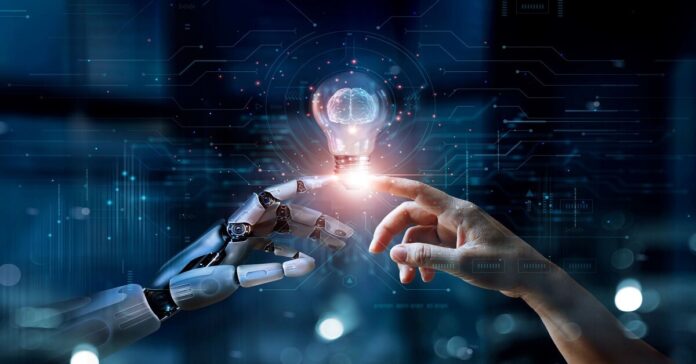AI facial recognition technology recognizes and investigates the user’s identity by recognizing their faces. It’s the most vital computer vision with vast commercial interest. Real-time and static face recognition is a widely read topic in the technology sector. Also, their applications range from surveillance to the service industry, marketing, bio-metrics, and law enforcement. Hence, this advanced technology is used to detect faces and fetch the face region from the picture background before applying face recognition methods.
History of AI-based Facial Recognition
In the early 1990s, face recognition gained popularity by following the remarkable Eigenface approach. Afterward, in the 2000s, holistic schools dominated the face recognition community; they had low-dimensional representation by specific distribution approaches involving manifold, linear subspace, and sparse representation.
However, the issue with the holistic method is that it failed to communicate uncontrolled facial behaviors that arise from their previous assumptions. Hence, in the early 2000s, it led to the advancement in local feature-based face recognition.
Learning and feature based local descriptor recognition were introduced in the early 2010s. Face recognition achieved remarkable performance via some invariant local filtering properties by using high-dimensional extensions, multilevel Gabor filters, and Local Binary Patterns (LBP).
Anyhow, handcrafted characteristics suffered from a lack of compactness and distinctiveness. So, in 2010, local filters in learning-based descriptors were introduced for the encoding codebook for better compactness and distinctiveness.
In 2014, the Facebook feature achieved cutting-edge accuracy of the famous (LFW) labeled faces in the wild standards, bypassing human performance in unconstrained scenes for the first time. Then, the research focus transformed to deep-learning approaches as they used a set of multi-layers of processing units for transformation and extraction. As a result, advanced face processing and larger-scale face databases managed to provide AI based facial recognition services.
What is Face Recognition and Deep Learning?
Deep learning is the deep convolutional neural network that received remarkable interest in face recognition, and many other deep learning techniques have been proposed since then. In 2014, it launched the research landscape that was a part of the Facebook feature.
Since then, AI facial recognition technology has leveraged the hierarchical architecture to understand different face representations, improving cutting-edge performance and demonstrating successful real-time applications. Deep learning provides diverse processing layers to understand data representation with different levels of feature extraction.
How Does AI for Facial Recognition Work?
Due to its natural and non-intrusive characteristics, facial recognition is the prominent biometric method of identity verification. Resultantly, military, public security, finance, and daily life sectors use this advanced technology to achieve desirable results. Moreover, the facial recognition task differs from general object classification tasks due to the uniqueness of faces.
Thereby, it has to deal with many classes with little or more inter-class differences and significant intrapersonal changes due to alternate illuminations, ages, poses, expressions, and occlusions.
Face recognition techniques represent multiple representation levels corresponding to diverse abstraction levels. Thus, this hierarchy level demonstrates invariance to the facial pose, expression changes, and lighting. With GPU (advanced graphics processing units) and extensive training data, deep face recognition techniques have increased in performance and numerous real-world apps in the 5 years.
That’s why different surveys have been performed on facial recognition and its subdomains, such as 3D face recognition, masked face detection, and invariant face recognition. Face recognition AI has attained beyond human performance on benchmarks based on massive data amounts, GPUs, and algorithms. These benchmarks include similar face discrimination, cross-age, and frontal face verification.
What are AI for Facial Recognition Applications?
Face Recognition Variants
3D face recognition has many advantages over 2D processes, but 3D is underdeveloped due to the lack of huge annotated information. Broadening 3D training datasets is crucial, that’s why most workers use the techniques of “one-to-many augmentation” to incorporate 3D faces. But, the technology sector extracts deep characteristics of 3D faces.
Partial face recognition recognizes a face’s arbitrary picture patch and usually appears in an image capture environment, specifically when faces are taken through CCTV cameras or mobile phones. Masked face verification is a computer vision application used for coronavirus victim management that falls into its category.
Face recognition for mobile devices has been applied in the mobile industry with the emergence of tablets, augmented reality, and mobile phones. However, due to a few restrictions, the recognition tasks in smartphone devices have to be carried out in an advanced style.
Summing Up
AI face recognition is remarkable when it has massive sets of ethical enforcement. Every face has numerous data points, with the distance between the nose, eyes, and cheekbones. Hence, AI for Facial Recognition is a revolutionary point for many companies. Thus, these biometrics can quickly reduce identity authentication costs and improve speed, scalability, or accuracy.




